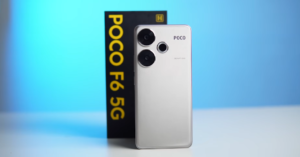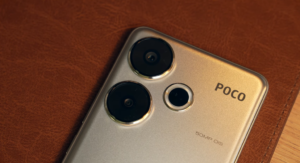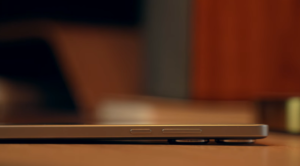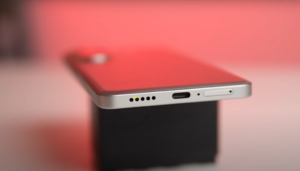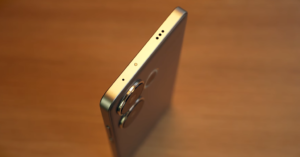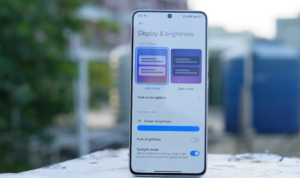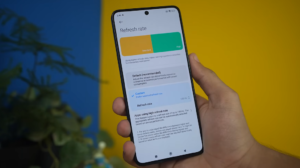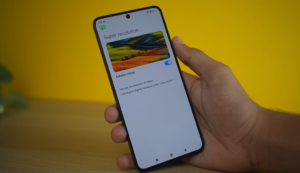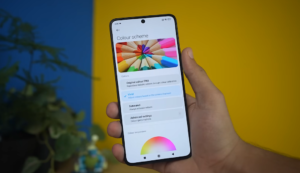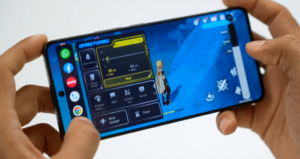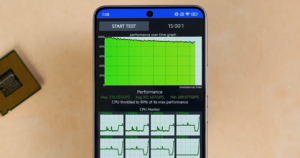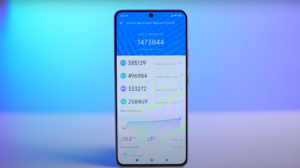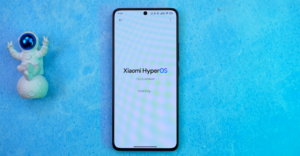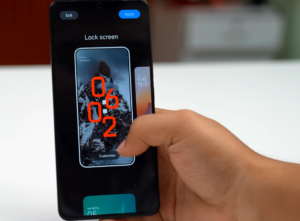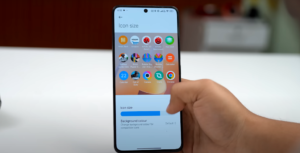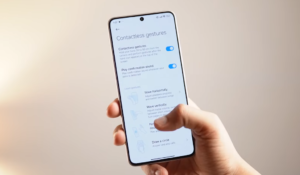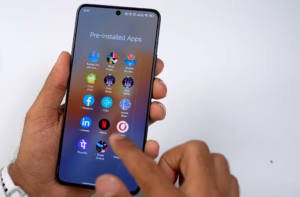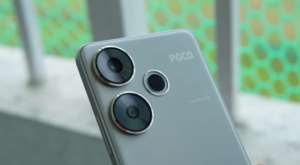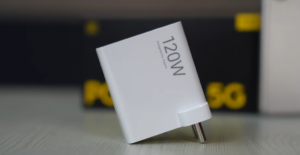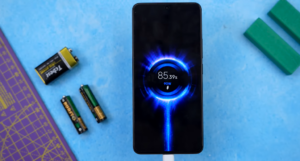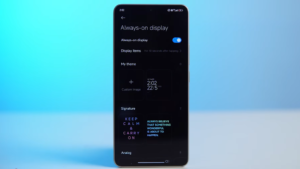A flagship killer that provides great performance but there is a catch!!
POCO has been a young and emerging brand mainly known for its performance-centric smartphones over the past years. It has tasted a good level of success with its different lineup of smartphones including the X-series, C-series, and the flagship F series. But recently there was a time when we could see the motherboard issues with POCO smartphones which has been addressed by the brand lately.
Just like the POCO F1 which set the benchmark of a true flagship killer, POCO is aiming the same spot with the newly launched POCO F6. With the POCO F5 (Review) launched last year, POCO has gained huge success as the smartphone brought all the specifications for the price, thus maintaining its top-level performance and gaming capabilities.
With the POCO F6, here we can see the continuation of providing a performance-centric smartphone which will definitely make many premium flagship smartphones go into admiration. It sports the powerful Snapdragon 8s Gen 3 chipset which is a big highlight and thus provides some other good specifications. But POCO seems to have cut a few corners to price it aggressively to give serious competition out there.
So is the POCO F6 worth considering in the premium mid-range segment? Let’s find out in the full review.
POCO F6 Design:
The POCO F6 sports almost the same design as its predecessor i.e. POCO F5 but there are a few changes. The camera rings are slightly larger and the third camera which was a macro camera on the POCO F5 has been replaced by a LED flashlight in the form of a circular ring. The back of the smartphone is made of polycarbonate with a smooth matte finish. It does not catch many fingerprints.
The POCO F6 is available in two different colours – Black, Green, and Titanium. However, the back does shine or show a glimmer when light strikes at different angles. The back is slightly curved around the sides making it easier to hold in hands. The smartphone weighs around 179 grams which makes it feel lighter due to the polycarbonate back.
There is an IP64 rating for dust and water resistance which is a good upgrade over the IP54 rating on the POCO F5. The smartphone is slightly thicker at 8mm around the sides but the sides are flat on the front. Towards the right side, there is a power button with a set of volume buttons whereas the left side remains completely cleaner.
At the bottom, there is a USB Type-C port, a dual SIM card slot, a loudspeaker grille, and a primary microphone whereas the top houses the secondary speaker grille, a secondary noise-cancelling microphone, and an IR Blaster. There is no microSD card slot for storage expansion. However, you do miss out on the 3.5mm headphone jack as present on its predecessor i.e. POCO F5.
On the front, the display has minimum bezels around the sides that look uniform and house a single punch-hole at the top in the centre. The front display of the smartphone is protected by Corning Gorilla Glass Victus which is really good and an upgrade over the Gorilla Glass 5 on the POCO F5. Overall, the design looks good but still it lacks the premium feel of a glass build as it has a polycarbonate back.
POCO F6 Display:
The POCO F6 houses a larger 6.67-inch 1.5K (1220×2712 pixels) AMOLED display with a screen-to-body ratio of 20:9 which is similar to its predecessor but there is a bump in resolution from Full HD to 1.5K which is good. Since it is an AMOLED display, the colour reproduction is great with deeper blues and blacks and along with it, the viewing angles are great.
The display has support for a 120Hz refresh rate which is an adaptive one and has two different settings to choose from – Default and Custom. Selecting the screen refresh rate to Default lets the display switch between 60Hz and 120Hz depending on the content in the display whereas choosing the Custome option enables the display to refresh between 30Hz, 60Hz, 90Hz, and 120Hz depending on the content in the display.
Combined with the 120Hz refresh rate, you get a 240Hz touch sampling rate for faster touch responses. The touch sampling also reaches a peak rate of 2160Hz during gaming thus enabling smoother gameplay. In terms of brightness levels, the display of the POCO F6 can reach a peak brightness of 2400nits which is really good as it is a huge upgrade over the 1000nits of peak brightness on its predecessor. i.e. POCO F5.
With normal usage especially in High Brightness Mode or under direct sunlight, the brightness comes to be around 1200nits which is good. The display legibility under direct sunlight is good. There are four different modes to choose from – Original Colour PRO, Vivid, Saturated, and Advanced Settings where you can set the display tone to a warmer or cooler one and also change the saturation level.
Unlike the POCO F5 which relies on the power button as a fingerprint scanner, the POCO F6 houses an optical in-display fingerprint scanner that works fast and accurately. The display has support for HDR 10 on YouTube and also there is Widevine L1 support so you can stream HDR content on OTT platforms along with it there is Dolby Vision support.
Overall, the display is great for multi-media consumption.
POCO F6 Performance:
The area where the POCO F6 outshines its competition is in terms of performance as it is equipped with a powerful Snapdragon 8s Gen 3 chipset which sits in between the Snapdragon 8 Gen 3 and the Snapdragon 8 Gen 2 chipsets. The Snapdragon 8s Gen 3 is an octa-core processor which has a 1×3.0 GHz Cortex-X4 core with 4×2.8 GHz Cortex-A720 cores and another efficient 3×2.0 GHz Cortex-A520 cores based on a 4nm process.
This chipset is coupled with a powerful Adreno 735 GPU which is great in terms of daily performance and gaming capabilities. All tasks whether scrolling through webpages, switching between applications, playing games, rendering videos, etc. felt smooth combined with the 120Hz refresh rate. When it comes to gaming, the POCO F6 holds a clear edge when compared to other smartphones in this price segment.
High-end games like BGMI, Call Of Duty Mobile, etc. easily run at the highest graphics settings where recently in BGMI, we played a session for around 3-4 hours continuously with the graphics set to HDR and frame rates set to Extreme, thus ensuring a smooth gameplay without any stutters or frame drops. Even after longer hours of gaming, the back does not feel warmer due to the vapour-cooling chamber underneath for heat dissipation.
But the area around the camera module does feel slightly warmer at times which can be negligible. In terms of CPU throttling test, the smartphone could achieve a sustained performance of around 80-85 per cent which is really good with almost minimal throttling. The benchmark scores are one of the best in class and also much higher compared to some other high-end smartphones.
In terms of network connectivity, you get support for 13 bands of 5G and also good carrier aggregation. The POCO F6 is available in three different variants – 8GB RAM with 256GB storage, 12GB RAM with 256GB storage, and another 12GB RAM with 512GB storage where the RAM is LPDDR5X and the storage speeds are of faster UFS 4.0 speeds.
POCO F6 Software:
The POCO F6 runs on the latest Xiaomi HyperOS with Android 14 out of the box. There are many changes compared to MIUI 14, including a new Control Center with no labels, a newer lock-screen look with different styles for the Always-On display, newer wallpapers on the lock screen with magazine-effect wallpapers, and much more.
Large folders are present, such as XXL and Enlarged, where you can have multiple applications, which come in handy daily. There are some newer AI features like transcribing live conversations during calls and generating subtitles in videos and some third-party applications, there are features like AI Portrait in the gallery application which allows one to generate an image and place it in any kind of background in other images.
Another AI tool, AI Expansion, allows you to expand the background by understanding the presence of the object in that background, which is good. AI Eraser is present where you can remove a part of the object and it can automatically fit to the background and fix itself. The AI Gesture Control works well as it provides different gestures which do come in handy daily.
There are many other Xiaomi applications like MiPay, MiBrowser, MiRemote, Browser, Gallery, File Manager, etc. and a considerable amount of third-party applications that can be uninstalled easily. The Game Turbo application comes in handy while playing games as it shows the fps count, shows the pop-up of messages, and cuts unnecessary/spam calls during gaming.
In terms of software updates, the POCO F6 will receive another three years of AndroidOS updates and four years of security patches which is good.
POCO F6 Cameras:
The POCO F6 sports a dual camera setup that includes a 50MP f/1.6 Sony IMX882 sensor for the primary camera and an 8MP f/2.2 Sony IMX355 sensor for the ultrawide camera. The front has a 20MP f/2.2 camera with an OmniVision OV20B sensor for selfies. The primary camera sensor is a good upgrade over its predecessor i.e. POCO F5 which had a 64MP OmniVision sensor for the primary camera.
The primary camera does a good job in terms of details that look sharper and have a good dynamic range with almost less noise in the background. The colours look saturated without any kind of oversharpening in the background. However, when clicking the images of human subjects, some skin smoothening takes place but the white balance could have been slightly better.
By default, the images are saved at 12MP if you use the dedicated 50MP mode, resulting in images with sharper details and good dynamic range. Still, there is slightly more noise in the background with some oversharpening taking place. At night, the primary camera does a good job in terms of details but the exposure could have been handled better you get sharper details with good dynamic range.
The colours look oversaturated in the dark and the camera suffers slightly from light flair. The noise is very low in the background which is good. With the dedicated Night Mode turned on, things do improve slightly with almost no noise in the background. The 8MP ultrawide camera does a good job in terms of details that look sharper and have a good dynamic range with almost less noise in the background.
However, around the edges, there is distortion present but the colours look saturated without any oversharpening. But at night, the ultrawide camera does struggle in terms of details which look slightly softer and there is a higher amount of noise in the background. The colours look slightly washed out and there is some oversharpening present. The dynamic range comes out to be average.
There is no dedicated third camera which is good and you can use the main camera by doing a 2x digital zoom which results in sharper details and good dynamic range with natural-looking colours in the background. In terms of selfies, the front camera does a good job in terms of details that look sharper and have a good dynamic range with almost less noise in the background.
The skin tones look natural without any oversharpening. In terms of portraits, the primary camera does a good job in terms of edge detection and the level of background blur is well implemented in the surroundings. The dynamic range is good but there is some loss in details noticed at times. There is a huge amount of oversharpening in the background which can be improved further.
In terms of videos, the primary camera can record 4K videos at 60fps which results in sharper details and wider dynamic range with almost less noise in the background. The colours look punchier in the videos and exposure is well handled but there are some issues noticed during focusing at times. The ultrawide camera can only record 1080p videos at 30fps which have sharper details and good dynamic range.
However, there is a larger amount of noise in the background but the colours look saturated. The 1080p videos at 60fps from the primary camera have much better details and great dynamic range with almost no noise present. The front camera can record 1080p videos at 60fps which results in overstaurated skin tones and background with wider dynamic range and sharper details.
POCO F6 Battery Life:
The POCO F6 sports a larger 5000mAh battery which is similar in size when compared to its predecessor i.e. POCO F5. Combined with a more powerful Snapdragon 8s Gen 3 which is built on a 4nm process and HyperOS optimizations, the battery life looks to be improved over the POCO F5.
With normal usage that includes browsing webpages, streaming social media, and attending calls casually, the smartphone easily lasted for two days with some charge left. The standard screen-on time with normal usage came around to be 6.5-7 hours which is really good. With heavy usage that includes playing heavy games like BGMI, rendering videos, and taking videos and images from the camera, the smartphone easily lasted for a day and a half.
In terms of charging, there is a 120W fast charger bundled inside the box but the smartphone charges only at 90W and it takes around 35-40 minutes for a full charge from 0 to 100 per cent completely which is a good improvement over the 67W fast charger supplied with the POCO F5.
POCO F6 Audio Quality:
The POCO F6 has a dual stereo speaker setup that sounds adequately loud and clear. The level of bass and treble is well-implemented and the sound does not feel muffled or distorted even at the highest volume settings. There is Dolby Atmos for enhanced sound output but you do miss out on a 3.5mm headphone jack which is very disappointing since its predecessor i.e. POCO F5 had it.
Verdict:
The POCO F6 is a great premium mid-range smartphone that brings all the required specifications like a good-looking design, a great display along with stereo speakers for multimedia consumption, flagship-level performance and gaming, good software experience, a good set of cameras, great battery life with support for faster charging.
However, there are a few areas where POCO have made some sort of compromises to price the smartphone aggressively. The design looks good but the back is still polycarbonate which does not give a premium feel as you get it on a glass back, HyperOS feels smoother and comes with a lot of features but the presence of bloatware ruins the experience, and the camera experience is just average.
The primary camera is an improvement over its predecessor but still pales when compared to the competitors and also the ultrawide camera does struggle in low-lighting situations. Other than these, all other things are the best in class and like all POCO smartphones, here also performance is the top priority which should make one buy this smartphone as it cuts the rest of the competition out there.
To sum it up, if cameras, glass design, and clean software experience are not your concerns, then definitely the POCO F6 is a solid consideration as it has its own reputation of being a good flagship killer in the market which makes it worth buying.


